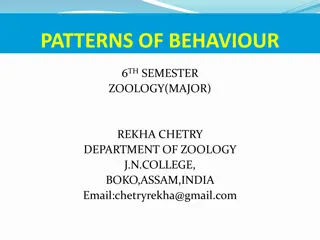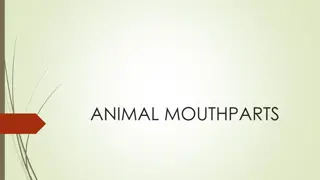Effective Strategies for Succeeding in HSC Exams
Learn essential tips for excelling in HSC exams, including exam preparation, timing, equipment requirements, and what to do in case of issues like illness or lateness. Understand how exams are set and marked, and master multiple-choice question techniques for optimal performance.
Download Presentation

Please find below an Image/Link to download the presentation.
The content on the website is provided AS IS for your information and personal use only. It may not be sold, licensed, or shared on other websites without obtaining consent from the author. Download presentation by click this link. If you encounter any issues during the download, it is possible that the publisher has removed the file from their server.
E N D
Presentation Transcript
Survive and thrive Advice for your Trials and the HSC http://www.smh.com.au/national/education/hsc-study-guide-2017
Exam tips Double check the date and time of each exam. Plan your journey, leaving plenty of time to get there. Have the right equipment with you forgotten or faulty equipment is not grounds for misadventure. Have spare batteries for your approved calculator. Bring a bottle of water. Leave your phone/smart watch outside and check your pockets before you go in. Listen to what the presiding officer tells you. Use a black pen. Write as legibly as you can. Stay calm and do your best! Timing is crucial. 1 mark = 1 and minutes , 5 mark q = 8 minutes a 12 mark etc. Plan this out in reading time.
How are exams set and marked? How exams are set Exam questions are developed by committees of experienced, practising teachers and, where appropriate, university academics. Committees start work 12 months ahead of the exam and use the syllabus and exam specifications to develop questions, sample answers and marking guidelines. Each exam is reviewed by experts. How are exams marked? Teams of HSC teachers usually mark a single, or part of a single, question. Senior markers, under a Supervisor of Marking, develop a "marking kit" that ensures each response gets awarded the correct mark.
What if something goes wrong? HSC examinations CAN NOT be rescheduled!!! What happens if I'm sick or injured? See a doctor as soon as possible, preferably on exam day and attend every exam unless your doctor decides you are unfit. You will need to complete an illness/misadventure form, available from your school or Presiding Officer. What if I'm late or can't get to an exam? If you arrive late you can start your exam but you must finish at the scheduled time. You must also write to NESA, explaining why you were late and confirming you had no knowledge of the exam content before entering. If your late arrival was due to circumstances beyond your control, such as a car accident or transport delay, you should lodge an illness/misadventure application with independent evidence of what happened.
MULTIPLE CHOICE RESPONSES Read the question and try to answer it in your head before looking at the possible answers. Even if you think you know the right answer, read ALL the alternatives. Put a line through the alternatives you know are definitely wrong. You have about 90 seconds to answer each multiple-choice question. Don't rush but don't spend too much time on any one question. If you are not sure, leave the question and come back to it later. If you are still not sure what the right answer is, go with the answer you think is most likely. Never hand in a paper with a blank. If a question requires a calculation, do it first, then look for the right answer. The alternatives often include common mistakes, so check your working. Use black pen to fill in the response bubble, NOT pencil. The answer sheets are scanned and it is much easier for the scanner to read black pen. If you want to change your answer, put a cross through the incorrect bubble and fill in the new bubble. If you change your mind again and have crossed out the correct bubble, draw an arrow to it and write 'correct' next to it.
SHORT ANSWER RESPONSES The mark allocated to the question and the answer space (if provided on the exam paper) indicate how much you should write writing more won't necessarily result in more marks and you may run out of time. Read the questions carefully. Look for key words and identify the course aspect they relate to. Some may require you to integrate different parts of the course. Carefully consider any stimulus material such as artwork, quotations or maps. If it is included it will be needed to answer the question.
EXTENDED RESPONSES These are designed to examine important and/or significant topics in courses and test if you can put together a sustained, coherent response to a question that examines your understanding. The marks vary from 10 to 25 depending on the exam. Always READ the question carefully. Take time to determine what the question is asking you to do underline or highlight significant words (but not during reading time!) Don't fall into the trap of writing a pre-prepared response. Better answers are targeted to address the specific demands of the question. Be familiar with the key words in the NESA Glossary. Remember that some questions may start with words such as 'how', 'why' or 'to what extent' and use terms that are not in the glossary, such as 'design', 'translate' or 'list'. PLAN your response. You can include it in the writing booklet and refer to it as you go. Carefully consider any stimulus material such as artwork, quotations or maps. If it is included it will be needed to answer the question. Check the recommended time for the question and try not to spend too much time on one question at the expense of others. Practising old exams is useful but the questions change every year. You have to answer the question that is asked this year, not one you may have prepared for in advance.
Study tips Make yourself a study timetable and include breaks and activities other than study. Colour code your notes. Use highlighters. Make posters and put them up where you can see them (your door, the bathroom mirror, on the fridge). Record notes or information on your phone so you can listen to your notes when you walk, are on the bus or train. Get a study buddy or form a study group. Not a social circle, a study group. Share problems with friends. Break down study tasks into pieces and tackle them one at a time. Do practice papers under timed conditions. Keep asking your teacher for feedback and help. Submit multiple drafts.
English Paper I includes three sections. Section I will include unseen texts that are linked to the concept of discovery. Section II asks you to compose an imaginative text that captures a particular aspect of discovery. Sometimes there is a stimulus, such as an image or text, which must be incorporated in your composition. Section III involves writing an extended response based on a specific question or statement. You must base your response on the set text you studied in class as well as a related text of your own choosing. The list of prescribed texts includes fiction and non-fiction prose, poetry, drama, film, media and multimedia and includes Shakespeare's The Tempest, the poetry of Rosemary Dobson, Kate Chopin's The Awakening, Michael Gow's play Away, Ang Lee's award-winning film The Life of Pi, and series 1 of the SBS series Go Back to Where You Came From. When selecting suitable related text, you will need to provide evidence from the text in the form of quotes and textual analysis in order to support the ideas explored in your extended response. Prepare for the exam by knowing your texts very well. Make sure you read the questions carefully in your exam to see how you can apply your knowledge to the specific question being asked.
Section1- English Section 1's short answer questions on a number of unseen texts connects to the concept of discovery. You should determine what each text has to say about this concept and explain how the composer has communicated this. Use the 10 minutes' reading time to read carefully over the unseen texts and the questions. Pay close attention to what each question is actually asking you to focus on. The mark values allocated to each question are a guide to the level of detail required in each response. Try to narrow down the particular ideas about 'discovery' represented in each text. It is usually better to discuss specific ideas rather than 'discovery' in general. Use relevant quotes and examples from the texts that support your ideas. Your analysis of the textual features should always support your understanding of what the texts have to say about 'discovery'. Only select the techniques or features that you can explain, support with evidence and meaningfully connect to the ideas you have identified. Remember that analysis of techniques does not replace an insightful understanding of the ideas communicated in the text. Study the language and ideas in the syllabus section titled Area of Study and texts for the common content of the Standard and Advanced course. Follow the link here.
Section II - English Section II is your chance to be creative. It's the only section in the two English exams that allows you to be the creator rather than the responder. It usually requires you to compose a piece of imaginative or creative writing, often based on a stimulus of some kind: a quote, question or picture or combination of these. To prepare you should be familiar with past examples. In the exam, think about ... The question: It provides the focus for your imaginative piece of writing. Circle, underline or highlight key words; verbs, concepts, instructions. The stimulus: What does the question ask you to do use it as your first or last sentence? As the "basis for" your response? Or incorporate it as a "central element"? Each requires a different approach. Consider going beyond a literal use of the stimulus. Think about what an image might symbolise. For example, an image or quote representing a cliff face doesn't mean your character has to encounter one. Instead, it could symbolise the obstacles that must overcome in order to attain a discovery. Your understanding of "discovery" Your writing should demonstrate your understanding of discovery, but this doesn't mean characters need to say it in a direct way. It's better if it comes out subtly through actions and descriptions, rather than explicit statement of a character's thoughts or dialogue.
Section II continued Characters: A few well-developed characters can help to make your imaginative writing credible and entertaining. Characters are often best created through action. This might be what they do, but also how they behave with, or in response to, others. Lots of description about what a character is thinking may be less effective. Plot: For short, imaginative pieces, a short time frame of a day or less is often best. Usually, things need to happen. Plan these before you start to write, and know your ending in advance. You could even start with your ending and work backwards. Avoid taking plot lines from movies, TV shows or computer games. Setting: Effectively establishing where and when a story takes place will make your piece more believable. This doesn't mean lots of description. Your setting can be established effectively in a sentence or two, or even a few words. As well as describing places, also consider objects, weather and how people speak. For example, music could be played on a laptop or the radio, each suggesting a different time period. Try to use a variety of senses across your writing, rather than just describing what can be seen. How you write: Use standard spelling, punctuation and grammar as a general rule. Vary your sentence length and type. Think about using strong verbs rather than adverbs to convey the type of action. For example,"strolled" instead of "walked slowly". Use figurative language such as similes, personification and symbolism, purposefully.
Section III - English Here s how to unpack and write it. Q: Discoveries open up new ideas that may challenge one s assumptions. To what extent do the texts you have studied reflect this? In your response, refer to your prescribed text and one other related text of your own choosing. So, aim to form a solid line of argument in response to the question, then prove your point with evidence and examples from texts. Step 1, Plan Explore the question to formulate an argument: WHAT ideas? WHERE did they come from? WHAT assumptions? HOW were they challenged? PLAN your response. Step 2, Introduction Write an introduction stating your thesis. Expand your line of argument while introducing your texts. Sustain your argument throughout the response.
Section III continued Step 3, Body Write detailed, structured paragraphs in the body of your response. Build your argument through quality topic sentences. Quote and explain the composer s use of techniques. Show your knowledge of texts using numerous examples. Step 4, Conclusion Reinforce your argument in the conclusion. Prove that you have argued the question well. Remember the question is asking you, To what extent so drive home your position on the question.
Random facts More than 77,000 students are enrolled in one or more HSC courses. 118 HSC written exams are sat from October 16 - November 7. 96 exam committees and about 300 committee members develop the written exams. Exams are held in more than 750 places staffed by more than 7500 supervisors and presiding officers. There are more than 5500 exam markers. HSC results are issued online, by email and text from 6 am, Thursday December 14.
There is still time Get up, Dress up, Show up & Never Give up! 50 % school mark 50% HSC so technically you still have about 60-70% of the marks up for grabs No marks have been determined as it depends upon how we all go in exam Every day counts 15 school days before Trial HSC 34 school days left of year 12 Or
Feeling stressed before the exam? It is normal to feel anxiety just before an exam. Here are some strategies to help you manage this: It isn't the most pleasant feeling but you can handle it. Remember, you have strategies. Challenge any unhelpful thoughts. Use slow breathing: Breathe in and hold for a count of five. Exhale. Focus on slowing down your breathing by working towards breathing in over a count of four and out over a count of four. As you breathe out say the word "relax." Repeat. Don't get caught in the frenzy. Rather than get caught up in last-minute fact-checking on the way into an exam or the comparisons with other students, try to stay in control and stay calm. Keep your distance from people who might make you feel more stressed. Get into a calm zone by breathing.























